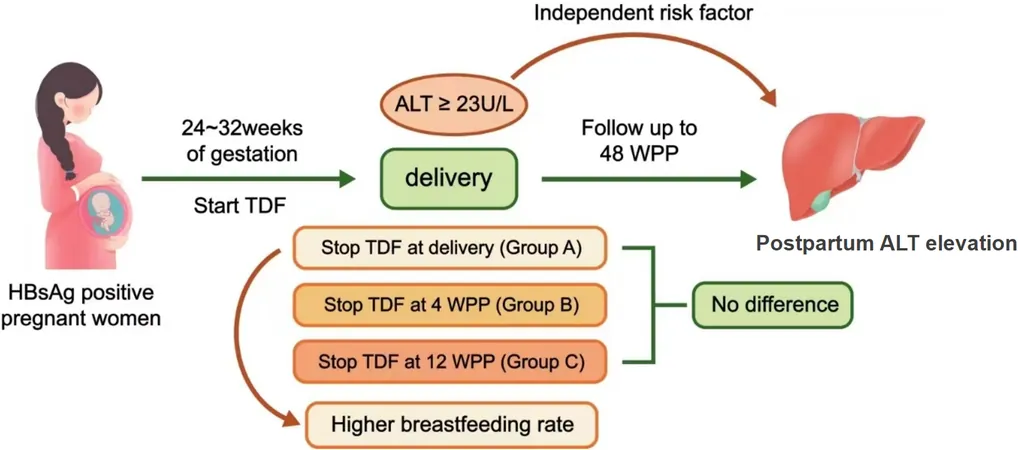
Revolutionizing Asthma and COPD Treatment by 2025: New Insights and Strategic Approaches
2025-08-05
Author: Wei
A Game-Changer for Asthma and COPD Treatment
As we approach 2025, asthma and chronic obstructive pulmonary disease (COPD) continue to pose significant challenges for healthcare providers. The introduction of biologics and biomarkers has started to reshape patient management, particularly for those suffering from type 2 (T2) inflammation. However, the question remains: how can these advancements be effectively implemented in everyday clinical practice?
Insights from a Key Clinical Forum
At a recent HCPLive clinical forum held in Troy, Michigan, a distinguished panel of pulmonologists, including Arjun Mohan, MBBS, and MeiLan Han, MD, MS, gathered to discuss these important shifts in treatment paradigms. Mohan opened the conversation with a poignant statement, expressing disbelief that patients still struggle with asthma management in 2025. He highlighted concerns over chronic airflow obstruction and a high risk of exacerbations despite advances in treatment.
Understanding T2 Inflammation
Mohan emphasized the pivotal role of T2 inflammation in asthma's pathophysiology, revealing that many patients exhibit eosinophilic or allergic phenotypes that can benefit from targeted biologic therapies. "Biologics are revolutionary!" he exclaimed, noting their potential to reduce the prevalence of chronic steroid-dependent asthma cases.
The Importance of Biomarkers
Selecting the appropriate treatment, however, is not straightforward. The panel stressed the need for biomarkers like blood eosinophils and FeNO to inform therapy choices. Mohan noted, "FeNO is noninvasive, quick, and its reimbursement is improving, making it a frequently monitored biomarker in our practice." Yet, he cautioned that understanding the patient's inflammatory profile is crucial in interpreting these biomarker results.
Overcoming Practical Challenges
The discussion also highlighted practical obstacles in standardizing biomarker testing. Issues such as the instability of eosinophil counts and inconsistent FeNO testing practices can hinder routine care. Mohan pointed out that the optimal use of biologics often hinges on ensuring patients are adequately managed in terms of inhaler technique and existing comorbidities.
Emerging Developments in COPD Treatment
In the latter half of the session, Han shed light on advancements in COPD management, particularly the recognition of eosinophils as a significant biomarker. Research suggests that 30-40% of COPD patients exhibit some form of T2 inflammation. The recent approvals of dupilumab in 2024 and mepolizumab in 2025 signify a growing recognition of this pathway, although their clinical trial outcomes differ.
Looking Towards the Future
Exciting developments are on the horizon, including depemokimab, a long-acting IL-5 inhibitor set to be administered every six months. "Patients appreciate the idea of a twice-yearly injection," Mohan remarked, although he raised concerns about the logistics of patient monitoring and adherence.
Personalizing Patient Care
Even with an expanding array of treatment options, Mohan acknowledged that the choice of biologics often remains empirical. As the evidence and tools available to clinicians grow, personalizing treatment plans to meet individual patient needs has never been more vital. "We're only able to explore these questions now because we are starting to witness the real-world impact of our data in clinical practice," Mohan concluded.





 Brasil (PT)
Brasil (PT)
 Canada (EN)
Canada (EN)
 Chile (ES)
Chile (ES)
 Česko (CS)
Česko (CS)
 대한민국 (KO)
대한민국 (KO)
 España (ES)
España (ES)
 France (FR)
France (FR)
 Hong Kong (EN)
Hong Kong (EN)
 Italia (IT)
Italia (IT)
 日本 (JA)
日本 (JA)
 Magyarország (HU)
Magyarország (HU)
 Norge (NO)
Norge (NO)
 Polska (PL)
Polska (PL)
 Schweiz (DE)
Schweiz (DE)
 Singapore (EN)
Singapore (EN)
 Sverige (SV)
Sverige (SV)
 Suomi (FI)
Suomi (FI)
 Türkiye (TR)
Türkiye (TR)
 الإمارات العربية المتحدة (AR)
الإمارات العربية المتحدة (AR)